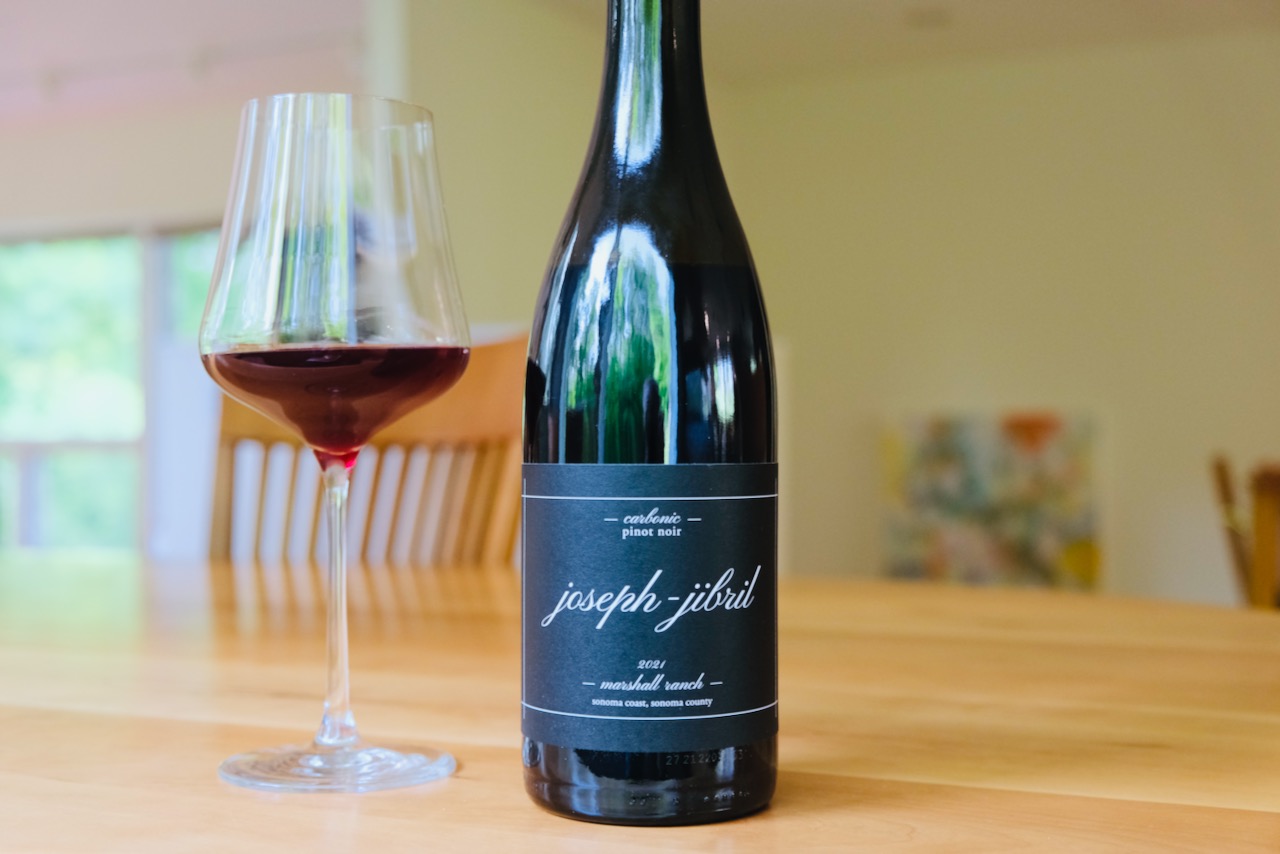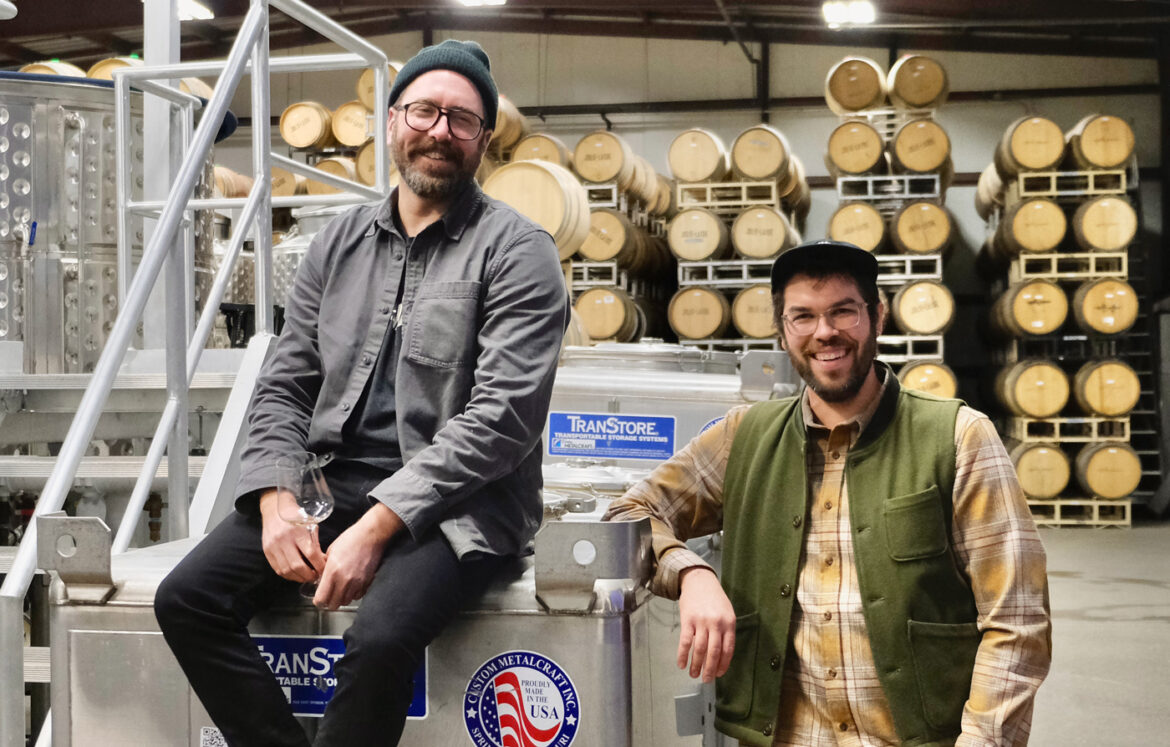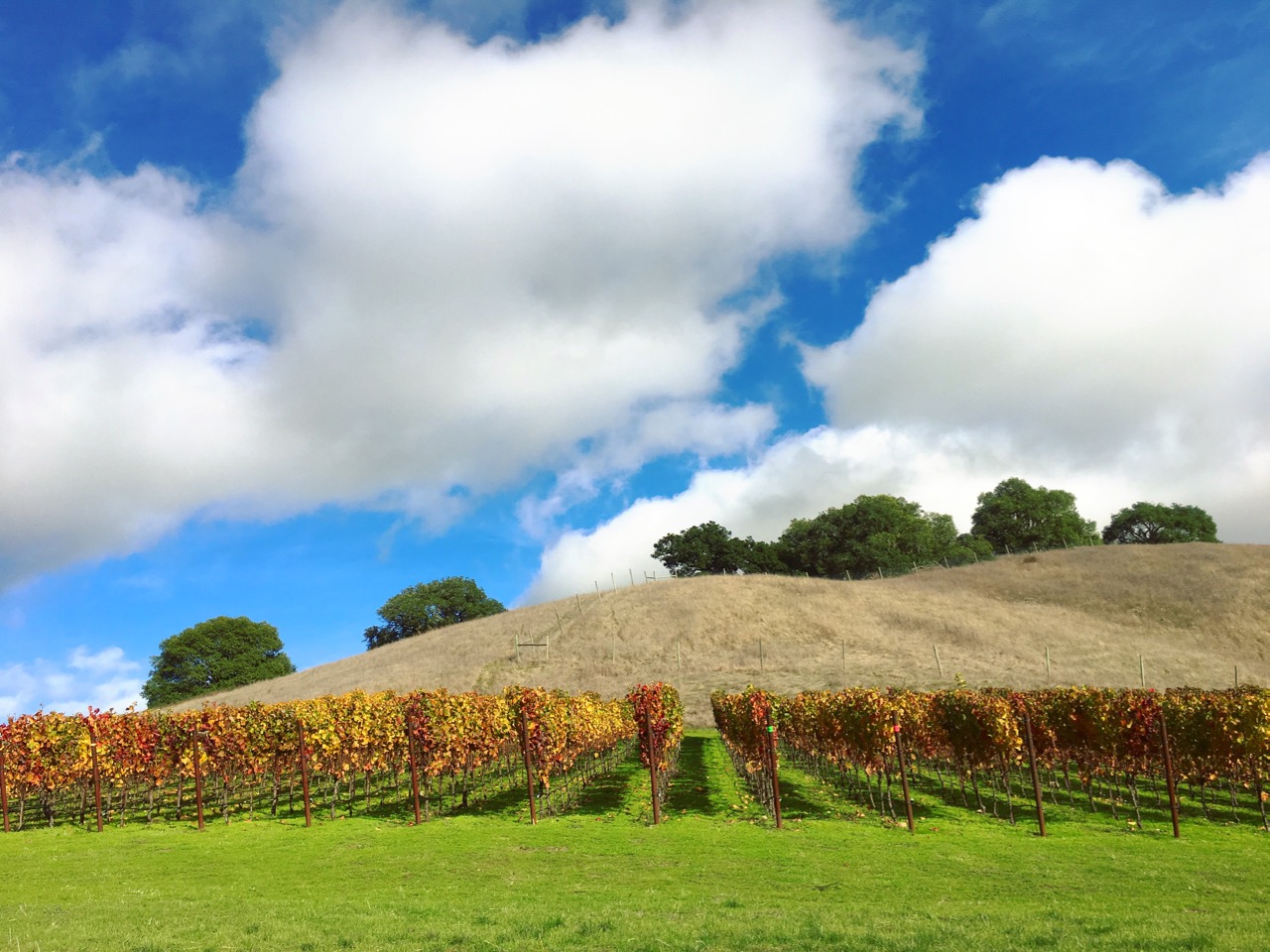The camera pans to a solitary figure, a winemaker striding their vineyard rows. Golden light streams on clusters as they pluck a ripe berry. We cut to the cellar, the winemaker now with pant legs rolled up, stomping grapes. Next we see them lovingly moving finished juice to barrel, and finally siphoning the vintage to bottles. Then they pour, swirl, sip, and toast their triumphant success.
We’ve all watched some version of this reel, maybe on a garagiste website, maybe on Instagram. It is a simplistic, idealized vision of pioneering spirit, the founder’s origin story written in wine. It is a fictitious creation myth that is both pervasive and enduring.
It’s not just false, it’s boring.
Reality is more interesting and, ironically, more heroic. There is no estate vineyard, nor estate anything, for that matter. The maker may get to call the grape pick, but more likely has to take whatever’s offered. They make their wine in a shared facility they rent for money or labor or both. They hope that when their harvest day job wraps (at 9 p.m., if they’re lucky) they’ll still wake up for their own midnight punchdowns. They barter and bootstrap, piggyback and parlay, so their hefty out-of-pocket doesn’t end up literally running down the drain. They are broke, vulnerable, tired — and exhilarated.
In real life, not the marketing fantasy, our hero’s obstacles are myriad, both natural and human-made. They deal with fire, flood, frost, drought, and all the other vagaries of vintage, and also must negotiate a web of complicated interrelationships that binds the wine industry together — ties that are historical, regional, familial, and more. But the flip side of “obstacle” is “opportunity.” This industry ecosystem, this network of peers, means no wine gets made in a vacuum. The winemaker is not a solitary figure, a lone artiste or auteur. They do not have to go it alone. In fact, going it alone is almost impossible.
The flip side of “obstacle” is “opportunity.”
It’s this story, the nonfiction one, that has recently been the lived reality for friends Bobby Huff and Jaam Moynihan as they launched their new micro-winery, Joseph-Jibril.
I caught up with the men recently at the winemaking facility on Haydon Street in Healdsburg that they share with Scott and Jenny Schultz, of Jolie-Laide. By chance I’d landed on their doorstep right after visiting Pax Wines, in The Barlow market district in Sebastopol. I’d tasted Pax’s bottles, then four that Martha Stoumen makes in Pax’s facility. On my way out I’d picked up three left for me by Rosalind Reynolds, currently Pax’s assistant winemaker, who has a side-hustle project there which she calls Emme. I soon learned that another large winery has operations at the Barlow, although it flies under the public’s radar, utterly unmarked: Kosta Browne.
(Is your head spinning, yet?)
As it happens, Kosta Browne is where our story’s heroes met. Huff had joined the winery as an intern in 2017; Moynihan started a year later. By 2021, Huff had worked his way up to cellar master, and convinced Moynihan, who’d left for a six-month stage in Australia, to return to manage the winery’s Chardonnay program. “You’re going to kill yourself,” Huff had warned, “but you’ll learn so much.” That vintage Moynihan did a scrupulous deep-dive on each press cycle, logging the data and crunching the numbers, then ended up re-working the entire program for the following year. It was an unprecedented opportunity for such a young winemaker.

Kosta Browne offered the men a rich professional playground, all the pleasures and perplexities of a large, well-funded operation. As a bonus, the winemaking there is fairly low intervention (although, like their physical location, that’s not a fact they shout about). It’s a stylistic approach both Huff and Moynihan embraced.
Still, by 2021 the friends were itching to try their hands at making their own wine. That year they managed to secure enough Pinot noir to make two inaugural bottlings, a rosé and a vineyard designate, 250 cases in all. They named their label Joseph-Jibril, a hyphenation of their middle names. Moynihan now focuses full time on the new enterprise, while Huff currently works as production manager at Valkyrie Selections, an importer with an international portfolio of small producers. I asked them about the impetus behind launching their own new winery.
All it would take is a ton of hard work and attention.
“We were taking that passion we had started with at KB, and we were like, What could we do?” said Huff. As they started casting around for options, they learned that Schultz was looking for someone to work at this facility. The pair jumped at the opportunity. “A big motivator for us was having the safety of coming here to work with Pinot and Chard — which we’re comfortable with — on a much smaller scale. Plus also getting to work side by side with Scott,” he said.
“The thing about KB that was so magical is that we got to see three hundred ferments, between Pinot and Chardonnay, every year, with native primary, native malo, bottling with super minimal sulfur — around 30 parts,” Moynihan said. “From working there, Bobby and I had this vision of what our facility could be, and the sense that we can work in a truly native-everything way, and do it well. All it would take is a ton of hard work and attention.”
On the other hand: “It is way more terrifying when you’re doing it for yourself!” Moynihan laughed.
“Even for how many years of experience we have combined,” Huff added. “It’s still our $6,000 worth of fruit.”

2021 Joseph-Jibril Pinot Noir Rosé

2021 Joseph-Jibril Pinot Noir Marshall Ranch
Starting small meant getting used to working with limited clout and none of the safety nets they’d enjoyed at the larger winery. “You always want to grab the quality fruit,” Huff said, “but at the same time, someone who’s looking to buy two tons from a vineyard that’s selling twenty — they’re like, Please don’t bug us.”
Friends came in handy, that It Takes A Village effect. “Collective buying power is a really huge thing,” Moynihan said. “That’s how we got our organically certified Chardonnay this year. We split the vineyard with Scott and Jenny and Rosalind, and we got to reel off two tons. There’s no way that Rosalind and the two of us would have been able to buy two tons, but because Scott and Jenny bought ten and only wanted six, we each got two.”
It’s such a community vibe.
“The scene is a co-op vibe even though a lot of them don’t work together,” added Huff. “Like, Scott got a hundred oak barrels. He doesn’t need a hundred barrels, so he calls Pax, he calls Rosalind, Sam Bilbro at Idlewild, and everyone shows up — I’ll take two, I’ll take whatever. It’s such a community vibe.”
One might call you all competitors, I said, yet it sounds like one vast, slow-moving collaboration.
“The challenge with all this is yes, we’re all competing,” Huff answered, “but who needs more Chard and Pinot in Sonoma County, you know? Speaking for myself, I love Chard and Pinot, but I don’t necessarily love the $40 and $60 price point, and the same exact style from every place. It tastes like over-ripe maraschino cherries and François Frères oak. So for us, working with known varieties, it’s like, How do we set ourselves apart? How do we do something differently? It’s making approachable wines. Let’s just try to make wines at a lower price point that we would want to buy, to pair with food.”
“The biggest thing is looking that people actually can afford them,” said Moynihan. “Both of us came from similar working-class backgrounds — totally different sides of the country, and totally different experiences — but we want to make wine that our family can drink.”

Glasses in hand, we worked our way around their cellar, tasting their new wines from barrel. The pair was two weeks away from bottling, angling for 560 cases this year. There is a Pinot rosé from Barnwell Vineyard (the same source for last year’s pink wine), a Chardonnay from Bazzano Vineyard in the Russian River Valley (which was raised in a mix of puncheon and stainless), a Pinot and Cab Franc blend, and a varietal Cab Franc from the newly proposed Pocket Peak AVA in the Mayacamas.
The wines were texturally complex, deep, fruit-hearted, and delicious, even from barrel. I was particularly struck by the classicism of the Chardonnay, with its faint hit of reduction but profound sense of silky acidity and shiny yellow fruit. The red blend was minty and refreshing, with a pop of carbonic rounding out the mid-palate. The rosé and Cab Franc are both going to be winners.
“We don’t claim to do anything special, but in simplicity, in not overcomplicating, there can be magic,” Moynihan said. “We’re trying to do as little as possible while paying as much attention as possible, and learning not only from our contemporaries but also from history. People have been doing this for thousands of years, and it’s not that complicated: Smush grapes and wait, right? The real focus for us is making sure everything tastes good, and backing it up with science.”
Note: I have known Jaam Moynihan for many years and helped him secure stages when he was beginning his career.


